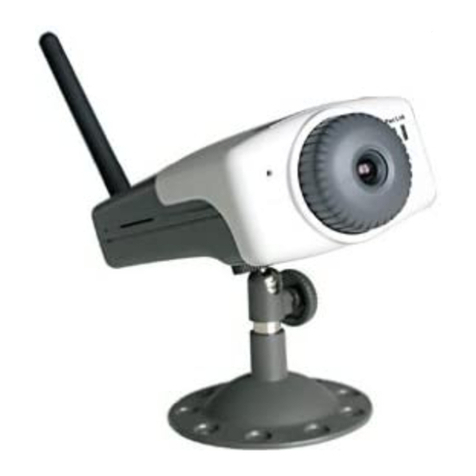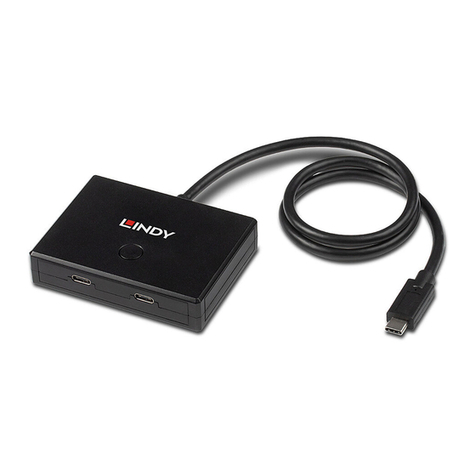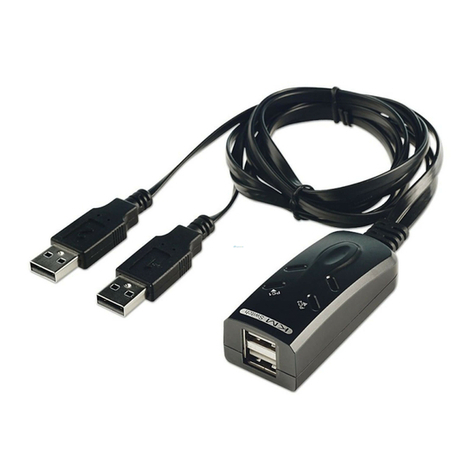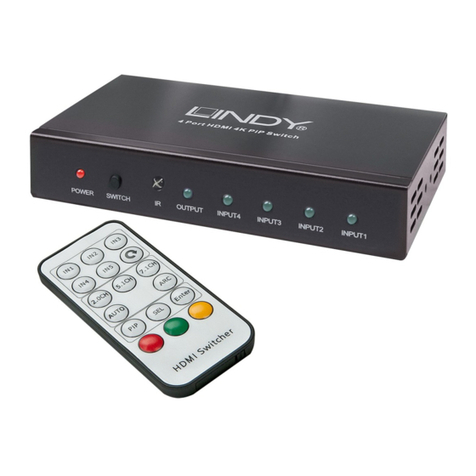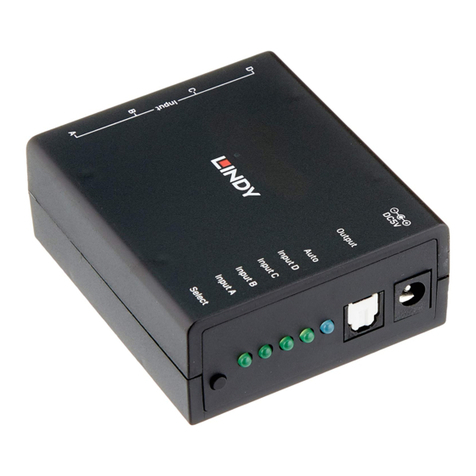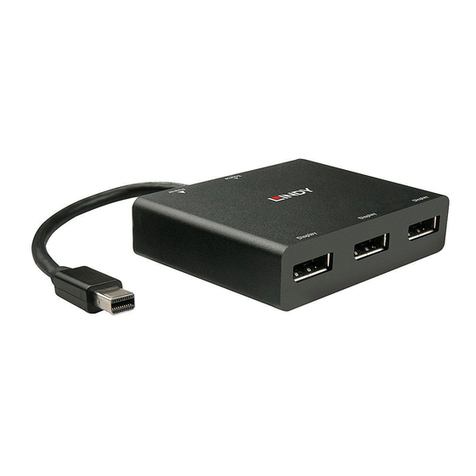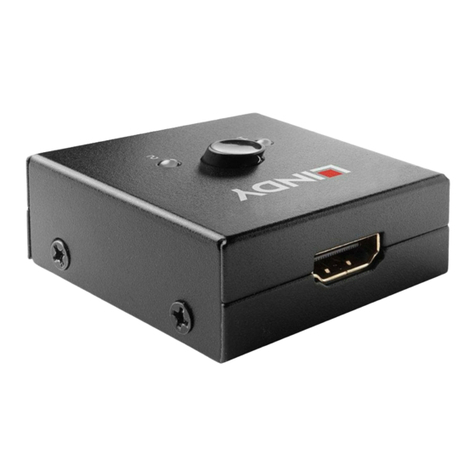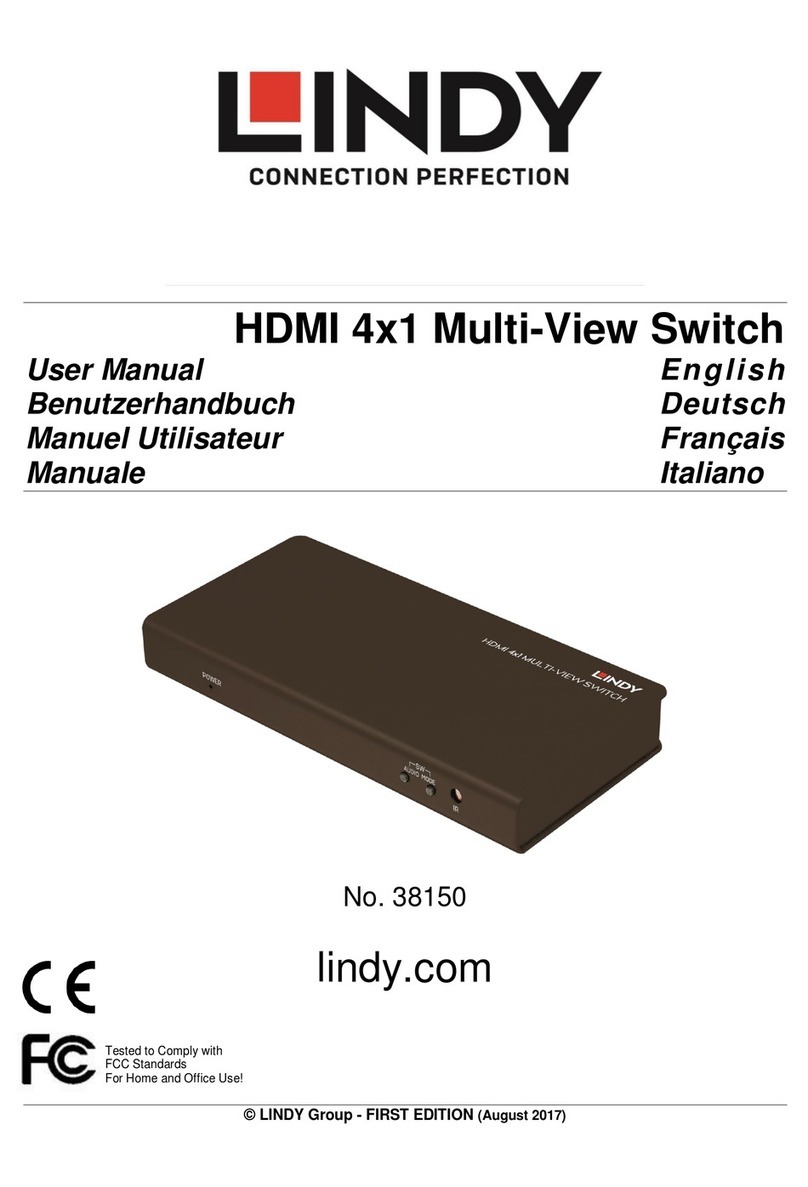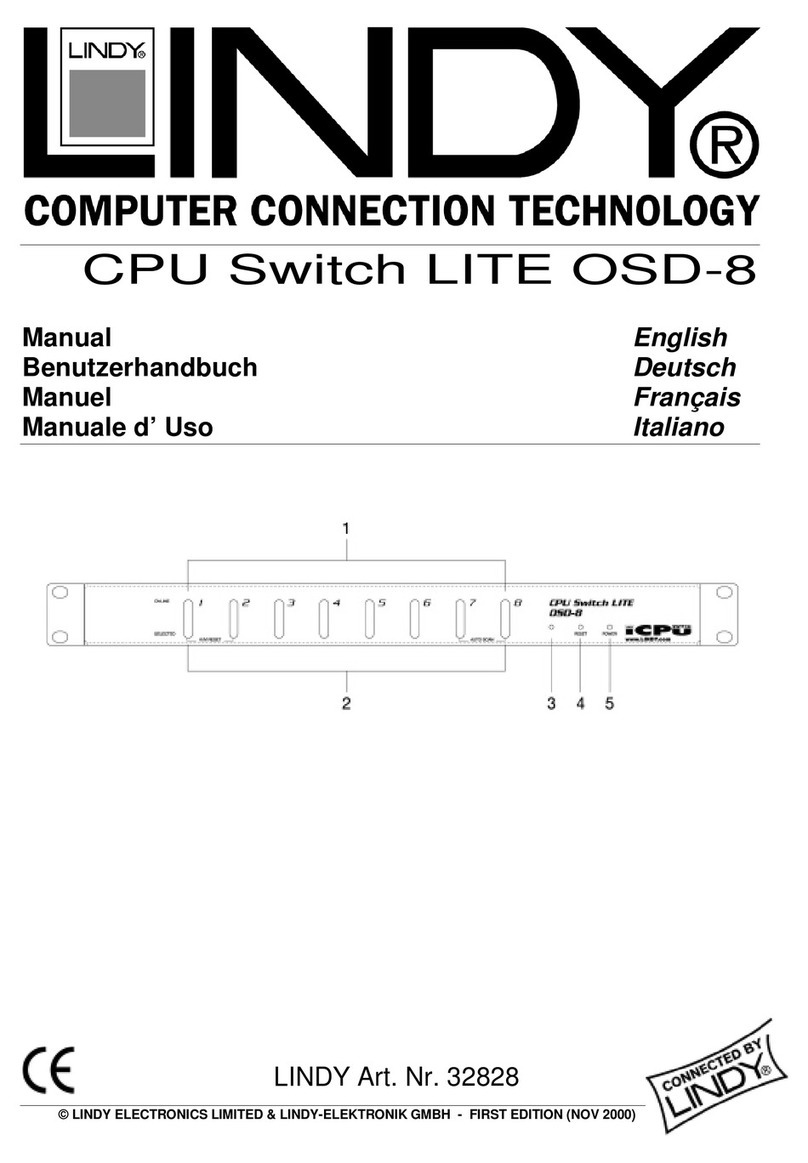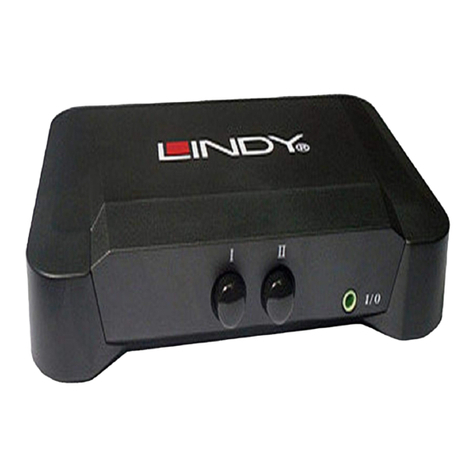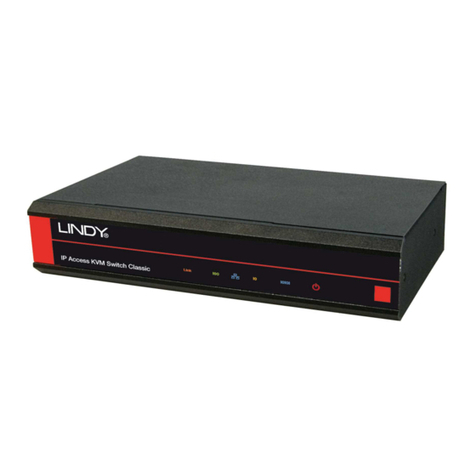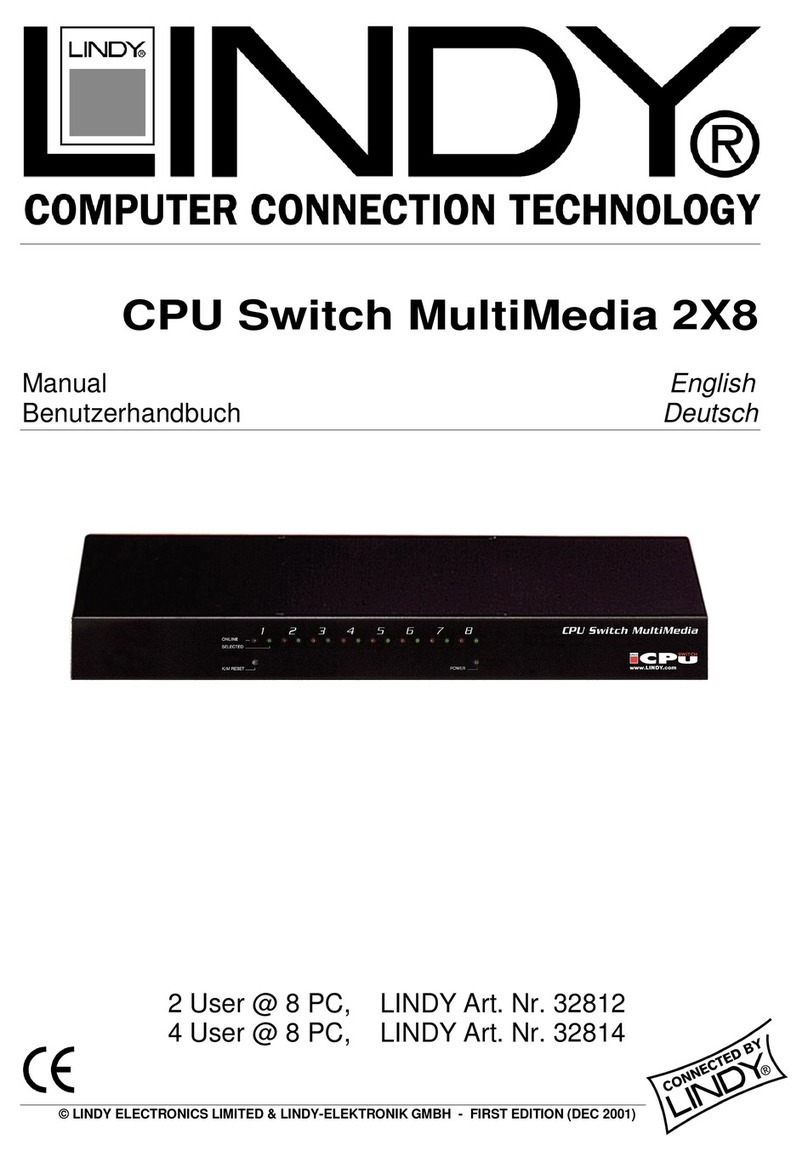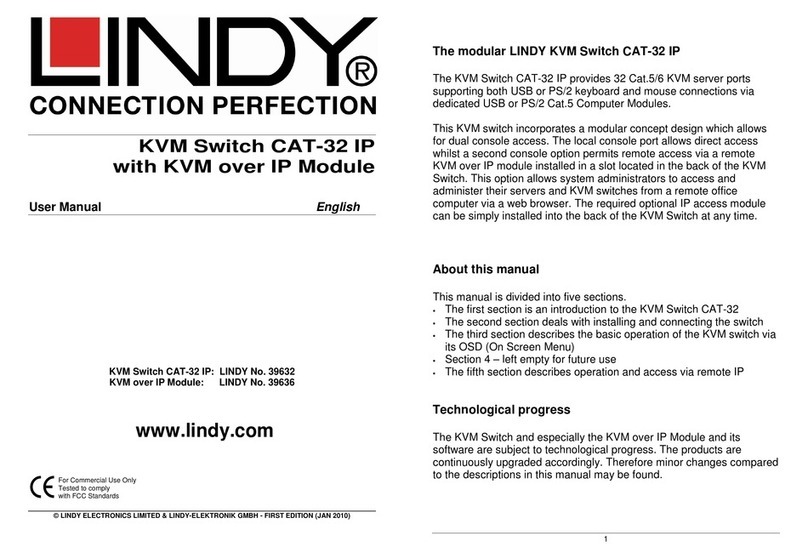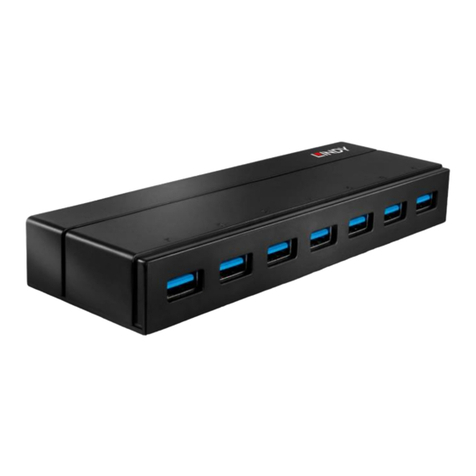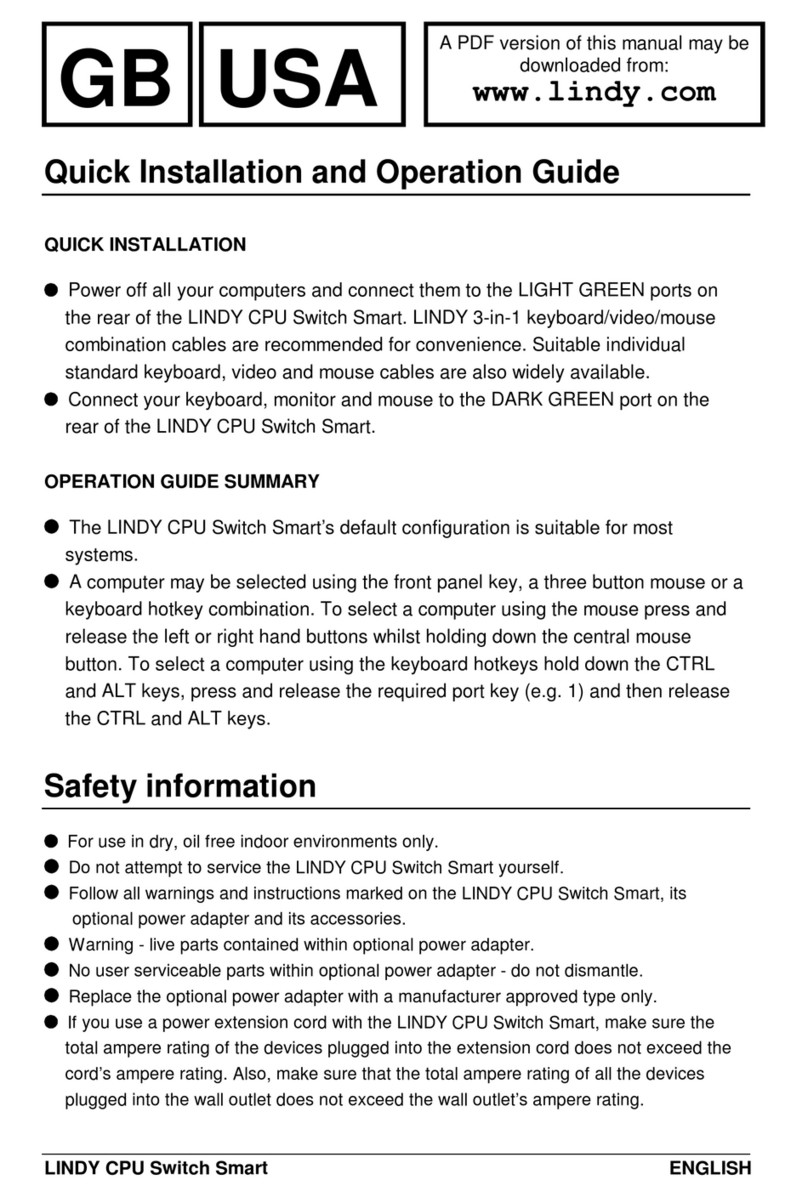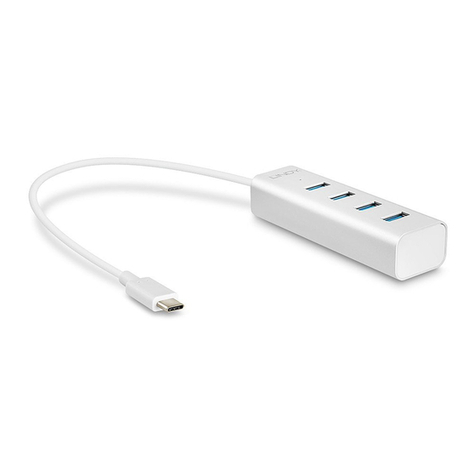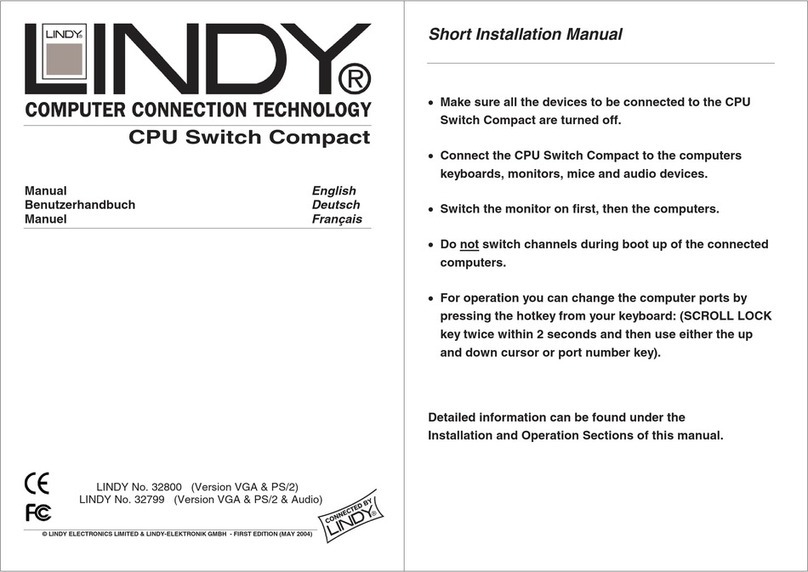Page 2 Installation & Use – English Guide LINDY ELECTRONICS LTD
Radio Frequency Energy
Shielded cables must be used with this equipment to maintain compliance with radio frequency
energy emission regulations and ensure a suitably high level of immunity to electromagnetic
disturbances.
European EMC directive 89/336/EEC
This equipment has been tested and found to comply
with the limits for a class B computing device in
accordance with the specifications in the European
standard EN55022. These limits are designed to
provide reasonable protection against harmful
interference. This equipment generates, uses and can
radiate radio frequency energy and if not installed and
used in accordance with the instructions may cause
harmful interference to radio or television reception.
However, there is no guarantee that harmful
interference will not occur in a particular installation. If
this equipment does cause interference to radio or
television reception, which can be determined by
turning the equipment on and off, the user is
encouraged to correct the interference with one or
more of the following measures: (a) Reorient or
relocate the receiving antenna. (b) Increase the
separation between the equipment and the receiver.
(c) Connect the equipment to an outlet on a circuit
different from that to which the receiver is connected.
(d) Consult the supplier or an experienced radio / TV
technician for help.
FCC Compliance Statement (United States)
This equipment generates, uses and can radiate radio
frequency energy and if not installed and used properly,
that is, in strict accordance with the manufacturer’s
instructions, may cause interference to radio
communication. It has been tested and found to comply
with the limits for a class A computing device in
accordance with the specifications in Subpart J of part
15 of FCC rules, which are designed to provide
reasonable protection against such interference when
the equipment is operated in a commercial environment.
Operation of this equipment in a residential area may
cause interference, in which case the user at his own
expense will be required to take whatever measures
may be necessary to correct the interference. Changes
or modifications not expressly approved by the
manufacturer could void the user’s authority to operate
the equipment.
Canadian Department of Communications RFI
statement
This equipment does not exceed the class A limits for
radio noise emissions from digital apparatus set out in
the radio interference regulations of the Canadian
Department of Communications.
Le présent appareil numérique n’émet pas de
bruits radioélectriques dépassant les limites
applicables aux appareils numériques de la classe
A prescrites dans le règlement sur le brouillage
radioélectriques publié par le ministère des
Communications du Canada.












